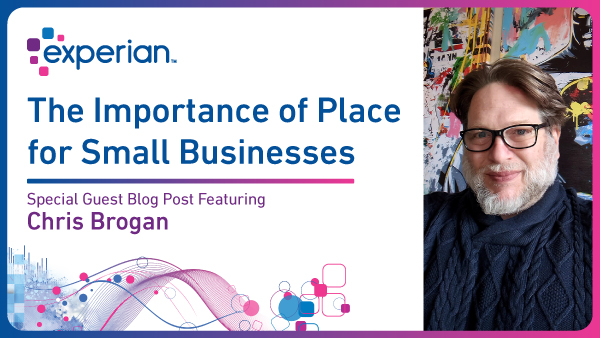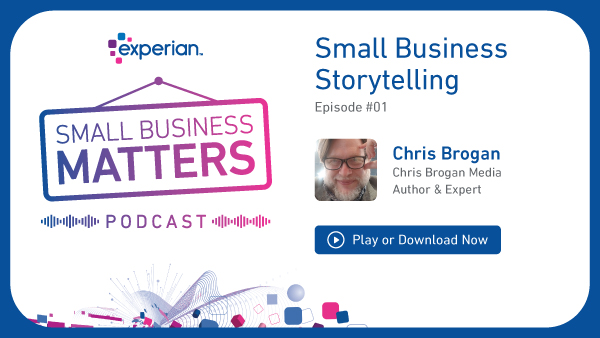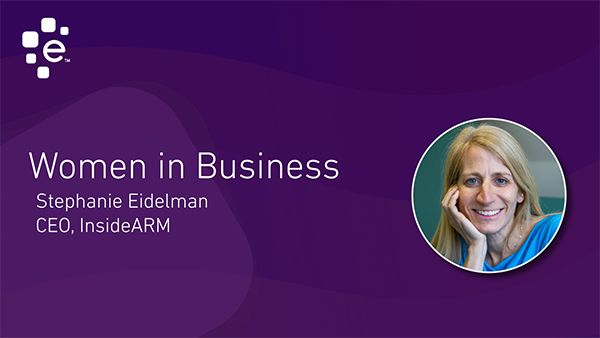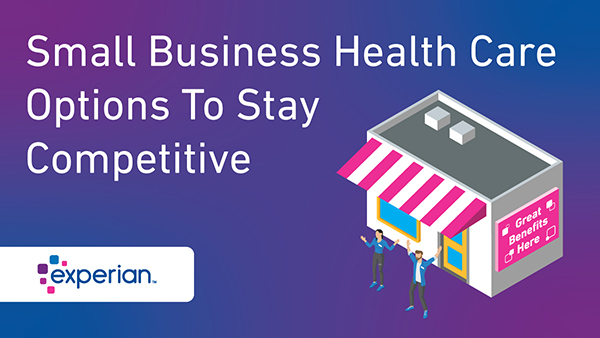Business Advice

Starting a solo business is financially empowering, whether you do freelancing to earn extra income or build a full-time enterprise. But along with greater financial independence comes the risk of not being paid. Clients may pay late; some may not pay at all. When your client doesn't pay, what can you do? Late payments from clients happen for a variety of reasons. How you respond can determine whether you get your money—or keep the client. Reacting to a brief delay with the threat of a lawsuit, for example, could damage your client relationship needlessly. On the other hand, failing to follow up could result in hundreds of lost work hours and financial problems for you if your client never pays their bill. The following steps begin with simple reminders and escalate to more significant action. Keep reading for tips on how to prevent missed payments in the future. 1. Resend Your Invoice If there’s been a simple problem—the invoice got lost, the client’s bookkeeper is on vacation—resending the invoice acts as a reminder. Send one as early as the day after a payment was due if necessary. 2. Contact the Client If resending an invoice doesn’t trigger a response, respectfully reach out to your client with an email or a phone call and inquire about payment. They may tell you a payment has already been sent or that one will be issued soon. Make a note of when you should expect payment, along with a calendar alert to follow up again if payment doesn’t arrive as promised. 3. Stop Working for the Client If you sent the client a new invoice and spoke with them about the late payment by phone, it may be time to step up your actions if payment still hasn’t arrived as they said it would. If you’re continuing to do work for them, consider pausing until you receive payment. Continuing to work may just result in a bigger bill—one that you aren’t sure is ever going to be paid. It also takes time away from paying clients. Letting your client know that you can’t continue working without payment may prompt them to act quickly. Are you working on a product, such as a book manuscript or custom cabinetry? Don’t deliver it until you have payment in hand. 4. Send a Debt Collection Letter You can have an attorney prepare a debt collection letter for you or find a templated letter to modify online. A debt collection letter acts as formal notice and documentation that your client owes you money, including how much they owe and when it was due. In your debt collection letter, you might specify whether you’d be willing to set up a payment plan to help your client get back on track or let them know you plan to initiate formal debt collection action. Depending on your client’s reaction or lack thereof, you can send more than one of these letters, escalating the matter’s urgency. 5. Consider Your Next Steps It’s possible your client will come through with payment at any of the previous steps. But if you’ve made every effort to collect payment from your client and they still refuse to pay, you can try taking them to small claims court to recover your money. Be sure to hold on to any documentation, such as debt collection letters, asking the client to pay. You’ll need to prove you are owed the amount you claim by providing contracts, letters, receipts or other information noting the agreed upon amount for the job. You’ll also need to find out what the small claims dollar limit is in your state. You can also look into turning over the debt to a collection agency to collect payment. However, you’ll only see only a fraction of your payment if collections are successful because the agency will take a percentage of the amount collected (which may or may not be equal to what was owed. You may also decide simply to move on. The time and stress required to recoup your loss may not be worth it. If you’ve lost tangible goods, you may be able to write off your loss on your taxes. However, you won’t be able to deduct an unpaid balance for services—the IRS doesn’t allow it. How to Avoid Not Getting Paid in the Future It’s impossible to completely avoid the risk of being stiffed. Even a good client can suffer an unexpected financial downturn or a sudden life crisis, and it can be hard to know whether a prospective client is creditworthy. You can’t eliminate risk entirely but you can reduce it by following a few basic tips: Sign a contract with a payment schedule. Whether it’s prepared by the client or by you, a contract spells out the scope and cost of the work you’re proposing. It can also include a payment schedule with clear deadlines and late payment fees (or discounts for early payment). Especially with a new client, get paid as much as possible up front, or consider breaking the payments up to coincide with specific work milestones. Vet new clients before you take them on. Has a new client been referred to you by someone you know? Have they been in business for a long time or are they just starting? Do they have references you can call? If you’re unsure about a new client, think about the work you agree to as having a credit limit attached to it: Start with a $500 project then increase the size of the projects if things go well. Speaking of credit, you can also check a prospective client’s business credit report. The information in Experian's business credit reports is continually updated, always accessible and includes the Experian business credit score, credit trade payment information, corporate registration, business public records, key personnel, and a lot more. Make it easy for clients to pay. Accepting electronic payments or credit cards may give your clients helpful options to pay on time. You may also consider accepting a payment plan or partial payment from a client who’s having trouble paying an invoice. If you do, though, think twice before accepting future work from them. Building a Stronger Business The more you depend on money from your freelance work, the more critical it is to get paid—in full and on time. When clients pay late or don’t pay, your business and personal finances suffer. You may not be able to meet your business expenses or pay your personal bills. You risk falling behind in monthly credit card and loan payments. You may also have to use business or personal credit to make ends meet while you’re waiting on payments and may be stuck with debt if you’re never paid. Fortunately, most business transactions don’t go this way. By limiting your risk with upfront payments, smaller projects and frequent billing; using contracts that spell out work and payment terms clearly; and following basic steps to collect when payments run late, you can reduce your chances of running into trouble. The risk of lost payments can also motivate you to build a cash cushion for your business—or your personal finances—so a late payment here and there is easier to manage. In these ways, the threat of late payments can make your business and your finances stronger, by making you a smarter business owner. About the author Gayle Sato writes about financial services and personal financial wellness, with a special focus on how digital transformation is changing our relationship with money. As a business and health writer for more than two decades, she has covered the shift from traditional money management to a world of instant, invisible payments and on-the-fly mobile security apps. Gayle began her career as a staff writer for Entrepreneur magazine. As an independent publisher, she edited and produced a series of personal finance magazines for credit union members and THINK, an executive magazine for the credit union industry.

You’ve heard it a thousand times: location, location, location. And sure, if you run a brick-and-mortar small business, details like great traffic and excellent parking certainly improve your possibilities. But regardless of your location, I thought maybe we could talk a moment about “place” and what it means to be a small business rolling into these next years. The Importance of Place for Small Businesses Ever since the COVID-19 Pandemic began in 2020, people everywhere have had to reconsider their relationships with local businesses. It used to just be a sign you’d see in the window: “shop local.” But with lockdowns, unemployment, shipping and logistics delays, and so much more to contend with, people everywhere found themselves having to think about who they wanted to spend their money with and what that meant to them. Before 2020, people might not have thought twice about placing their order with a large online retailer or a global big box store. But as the Pandemic continued, many communities rallied around supporting local businesses like never before. It suddenly became quite clear that without some direct and thoughtful local intervention, some of these small businesses might not make it for more than a few months, and some doors might be shutting forever. What could a small business do? Well, lots, as it turns out. Sean Hopkins opened “Hoppy’s Cantina” in a small northern Massachusetts town a few days before the entire state’s first big virus-related lockdown. He’d run restaurants before--this kind of delay might end up being a kiss of death before he’d even had a chance to fail in all the typical ways. He started posting little videos on Facebook about the kinds of burritos you could pick up via Take Out ONLY. Of course, just a few items were available, but Sean’s Facebook videos sold the heck out of them. His guacamole videos (often complete with singing) made your mouth water, not to mention the incredible pulled pork burritos. Sean’s efforts on his Facebook page drove sales that kept his restaurant alive during lockdown for sure. Local is More of a Badge Than Ever Before It’s a great time to promote your local roots, and people are showing interest in keeping their neighborhood businesses alive. It’s one thing to worry about who has the right price. It’s another to know that a company might vanish, thus leaving people with no local choice, if something isn’t done to keep it that way. All that glitters is not gold, after all. But one caution: there’s not a lot of forgiveness for poor customer service. You might not be able to compete on price, but if you don’t make the buying experience professional, friendly, and very efficient, you might not be able to count on that local support for long. One last detail: share the wealth. Just as you might run a local business, also remember to visit some local restaurants, buy from a few local shops, and refer as much business as possible to your neighbors. It’s most definitely a group effort, and the more people sharing the work, the easier it is to keep more local companies safe. What have you done to make “local” matter even more? About the Author In addition to being a best-selling author and influencer in the marketing space, Chris is a sought-after keynote speaker and showrunner of “The Backpack Show.” Currently, Chris serves as Chief of Staff at AppFire, providing strategic advisory services to the senior and executive leadership of the company, with a mandate to drive the company’s major initiatives across the organization. He is also President of Chris Brogan Media, offering brand and digital content strategy and business strategy advisory services. Related content Small Business Storytelling with Chris Brogan

Small business owners may have a small business credit card or even use their personal credit card when they’re just getting started. However, as a business grows, new types of financing that don’t depend on the owner’s personal finances—such as corporate credit cards—may become available. The Difference Between Corporate and Small Business Cards Corporate and small business credit cards can offer a variety of benefits. One of the main reasons companies sign up for a credit card is to empower employees to make purchases on the company’s behalf by using the company card. Using these cards, employees won’t have to pay out of pocket and wait to be reimbursed later. And employers may be able to limit where employees can use the card and how much they can spend, giving them greater control over their business finances. There are some similarities between corporate and small business cards, but they’re not created for the same types of companies. While small business credit cards may be available to any business, corporate cards are primarily intended for large and established businesses. What Is a Corporate Credit Card? Corporate credit cards—also known as commercial credit cards—are credit cards for medium- and large-sized businesses, although there are also some corporate card programs for startups. To qualify, a company must be either registered or incorporated—for example, as a limited liability company (LLC) or an S or C corporation. Card issuers may look at different factors when reviewing a card application, such as the business’s revenue, number of employees, history with the issuer and investors. In some cases, a business may need several hundred thousand (or several million) dollars in revenue to qualify. You may be subject to a credit check before getting a company card, but it won’t be reported to the credit bureaus under your name or impact your personal credit. Instead, the card’s usage and payment history is added to the company’s business credit report. Corporate cards also often don’t require a personal guarantee, meaning cardholders aren’t personally responsible for the debt. Unlike many small business cards, corporate cards are often charge cards rather than credit cards—meaning the company must pay the full balance at the end of each billing period. But similarly to personal and small business cards, some corporate cards offer rewards and have annual fees. Rewards aren’t the only—or even the most important—benefit, however. Companies can request employee cards to easily authorize and track employees’ expenses, eliminating the need for reimbursement requests. Corporate cards may also offer in-depth analytics and integrate with accounting platforms, which can help businesses save time, money and paperwork. What Is a Small Business Credit Card? Small business credit cards are typically more similar to consumer credit cards than corporate credit cards. Some consumer and small business cards even have similar names, fees and rewards programs. And, as with consumer cards, small business credit cards may let you revolve a balance and charge you interest on the unpaid amount. Unlike a corporate credit card, getting approved for a small business credit card can partially depend on the owner’s creditworthiness. If you apply for a small business card, the application might lead to a hard inquiry on your personal credit report. A card issuer may even report the card to the credit bureaus under your name, meaning it can impact your credit—although some only do this if the business misses payments. Small business cards also generally require a personal guarantee. As a result, if the business can’t afford the payments, you could be personally liable for the card’s unpaid balance. However, a small business card can help you keep your personal and business finances separate. The cards may also offer business-specific perks, such as free employee cards and bonus rewards on common business purchases. And, as the primary cardholder, you may be able to set limits on employee cards and determine how you want to use the rewards. Which Credit Card Is Best for Your Business? Most small business owners, entrepreneurs, solopreneurs and contractors will only be eligible for small business credit cards. However, if you work for or run a medium- to large-sized business or a venture-backed startup, a corporate credit card may be a better option. While you could open a small business credit card, a corporate card might give you a higher spending limit, more control over employees’ cards and better analytics and reporting. The ability to finance your business’s operations without being personally liable for the debt can also be a major benefit. Be Sure to Monitor Your Company’s Credit If you run a business and want to open a business or corporate credit card, your business credit score could be an important factor. Additionally, some small business lenders require a personal credit check before they’ll offer you a business loan, line of credit, invoice factoring or other types of financing. You can check and monitor your Experian business credit report, and get insights into how you can improve your company’s credit scores. About the author Louis DeNicola is freelance personal finance and credit writer who works with Fortune 500 financial services firms, FinTech startups, and non-profits to teach people about money and credit. His clients include BlueVine, Discover, LendingTree, Money Management International, U.S News and Wirecutter. Louis lives in beautiful Oakland, California, where he enjoys indoor rock climbing, yoga, and volunteers as a tax preparer.

Small business expert Chris Brogan on telling compelling stories for your small business and why storytelling is a vital component of your strategy.

Here are twenty-one small business marketing secrets for absolutely any budget that will elevate your business above the competition.

A third of new businesses will close by their second year, according to the U.S. Small Business Administration. Running a business that beats the odds starts with ingenuity, grit, and guts. So, what does it take to build a business that can withstand decades of economic upheaval in between the boons and successes to remain resilient? We thought this was an interesting question, so we did some research, examining businesses that have been on file with Experian for decades to see what traits they share. For G&G Electric Supply in New York City, four generations of perseverance and the ability to pivot are in their company’s DNA, beginning with founders Gabriel and George. The Zildjian Company has roots dating back to 1623 Turkey, and then as immigrants landing on Ellis Island in 1929 on the eve of the Great Depression. As we’ve all experienced through this historic period of national economic uncertainty, changes can occur in business that force us to adapt and adjust quickly. Market conditions shift, and even the best plans and roadmaps are forced to contend with entirely different circumstances. For small business owners, these conditions can be scary, and the volatile situation is a reminder that past profits and recent confidence are no guarantee for future success. There are companies today that are still standing, despite the shaky conditions that were brought upon by roller-coaster economics and dramatic world events. Inspired by reviewing the profiles for this article, we present some of the most interesting, resilient businesses and the attributes we think set them apart from others. Perseverance G&G Electric Supply Company, Inc. Founded: 1914, New York, NY Industry: Electrical equipment, wiring, installation In the early 20th Century, partners Gabriel and George thrived due to the swift modernization of homes and businesses. Everyone wanted electricity in their house, apartment, shop, or office. Weathering the storm of the Great Depression, they landed contracts for the now-iconic Empire State Building and Radio City Music Hall. The war years, personal losses, and shortages that followed offered their own challenges, but the company adjusted and added more clients by diversifying into software development. When one arm of the business was soft, they buffed up another to remain profitable, never giving up. Now in its fourth generation of family partners, G&G Electric Supply Company is still the major electrical distributor in Manhattan, with increased technical acumen and a robust offering of products and services. Specialization Dlubak Specialty Glass Corp. Founded: 1900, Blairsville, PA Industry: Weather-proof glass, security glass, decorative glass As manufacturers of glass, Dlubak Specialty Glass products cover a wide variety of needs, including aesthetics, privacy, safety, and more. At the core, they make one thing: glass. But their customers vary from commercial properties and government offices to prisons and military protection. Their expertise is built on specific knowledge to ensure that they provide the correct glass for their clients’ important needs. At a company whose projects have included the safety glass atop the Observation Deck of 30 Rockefeller Center in New York, to gunner protection for the U.S. Army, to bullet-proof glass for foreign embassies worldwide, one of Dlubak’s secrets to success is that they are renowned experts in their knowledge and true specialists at their craft. Reputation The Zildjian Company Established: 1623, Samatya, Turkey. In the USA: 1929, Quincy, MA Industry: Music cymbals, drumsticks, percussion mallets The story of Zildjian begins with its founder practicing alchemy in Constantinople, attempting to turn other metals into gold. Though that effort didn’t work, he discovered a metal compound that he crafted into a perfect cymbal. After centuries of success in their native Turkey, the family moved the business permanently to the USA in the 20th century, and their customers followed the music, so to speak. Music industry professionals from house bands and studio musicians, to world-famous celebrities, continue to seek out the Zildjian brand as the standard in the industry, at least partly because, after almost 400 years, they have earned something no one can put a price on — customer trust. Consistency The Russian Tea Room Established: 1927, New York, NY Industry: Fine dining, in-house catering, private events There’s an expression, “Good taste never goes out of style.” With its upscale interior design, A-list clientele, and adherence to customs like High Tea, The Russian Tea Room restaurant has remained popular due to its standards of excellence and its elegant old-world décor. Founded by members of the Russian Imperial Ballet, it has always been associated with the beauty and grace of high art. Rather than bending to trends and fads, it is steeped in the century-old European tradition. For a business dinner, elegant couples’ night out, or wedding reception, this reservations-only dining establishment has maintained its place in Manhattan society through impeccable quality and classic décor. By continuing to offer an unparalleled experience through its food menu and stocked bar, it remains an institution of luxury and glamour. Adaptability Booz Allen Hamilton Established: 1914, McLean, VA Industry: Commercial business consulting, cybersecurity and technology, defense and intelligence consulting Edwin G. Booz Surveys, as the company was originally known, started as a business that observed other businesses and then offered advice on how to make improvements. Mr. Booz used his background in psychology to focus on the people in business, rather than the products. He effectively invented modern management consulting as an operational business. Focusing on the people is still a major guiding principle of the company a century later. On the USA’s entry into World War II, they helped prepare the US Navy and expanded from commercial consulting into government consulting. Their chameleon-like ability to shift and change enabled Booz Allen Hamilton to continue to grow and increase their specialties including technology, cybersecurity, and more. One might argue that Mr. Booz’s own original psychology studies might have encouraged his company’s ability to always evolve to the needs of the market in order to discover new areas of opportunity. Resilience: in conclusion These brief profiles give a sense of some of the traits exhibited by these successful businesses over time, the ability to adapt and pivot, or provide exceptional customer experiences consistently, or respond to customer demand by offering highly specialized products and services. Above all, be strong enough to endure times of economic uncertainty to emerge strong and resilient. We hope you find them as inspiring as we did.

Some people might consider starting a business easy; the hard part is keeping the company open and profitable beyond the first two years. The odds of success are tough; a third of new businesses will close by the end of their second year. And 70% of these companies fade by year 10. According to the U.S. Census, 2020 business starts soared 27 percent to 4.4 million. COVID-19 closures and related layoffs were a likely catalyst. How many of these new businesses will succeed beyond their second year? It takes hard work, guts, and determination to grow a successful business, especially one that remains open for decades.The Small Business Administration studied business failure. In this post, we summarize ten leading reasons. Use them to keep your business on track. #10: Over-investment in fixed assets Up-front expenses are common for any business. However, over-investing early on can spell disaster. Evaluate the necessity of owning these assets. Perhaps you can lease or buy used equipment rather than buy new when you are just getting started. Avoid this problem by limiting start-up expenses, and maximize cash flow. #9: Personal use of business funds Some business owners will use their business to cover personal expenses, a big risk, and a potential accounting hazard. Many small business owners will use personal credit to bootstrap their operations. To bypass this mistake, keep your funding sources separate. To avoid legal liability, set up your business as an LLC, corporation, or partnership. #8: Poor inventory management For a young business, good inventory management is crucial. Tying up working capital in inventory can be risky. So, putting in place good inventory controls early on is just smart. Make conservative, experience-based projections of supply needs. Rather than draining capital and eroding profits, a business can set up a line of credit but must exercise proper control and accountability. #7: Unexpected growth As a business starts to flourish, it's tempting to invest everything back into it in order to grow. For the long-term, it's better to limit spending, especially on more significant expenses. Spending too much, too quickly exposes the business to increased risk, which can endanger working capital. #6: Unable to keep pace with competitors The free-market economy encourages competition. Competition can be good for consumers, but a new business must work hard to distinguish itself against larger, established competitors. Study them and look for areas of opportunity – the path to longevity is taking care of your customers. Find ways to deliver good value and good service. This will build good word of mouth and help set you apart. Business reviews are a great place to start building. #5: Location and visibility Visibility is a key component of success, so try to find a physical location close to where targeted customers work or live. Consider accessibility, parking, and the condition of the building. A business’s online presence is just as important – for both digital and brick and mortar businesses. Customers can’t buy from someone they can’t find, so a professional-looking website with pages designed to get found by search engines is a must. A strong presence on social media is equally important. #4: Lack of experience Good business leadership means having the experience to make the right decisions and anticipate the challenges in the initial stages of growth and beyond. Aside from the expected steps to build a business, leaders must adapt to handle the pressure and avoid costly mistakes. Before opening your business, know your products and services and research customer needs and the general market. #3: Poor credit arrangements A business must make customer payment and credit terms accessible, but it can hurt cash flow if your financing options are too flexible. Mobile payments such as Square, PayPal, Venmo, and Zelle may help provide easy payment solutions. Establishing clear credit terms for large accounts is best. Just as you assess the creditworthiness of your customers, your business is also being assessed by potential vendors. To be seen as good credit risk, keep tabs on your own business credit score. #2: Low sales Maintaining consistent sales levels is a significant success factor for any growing business. Low sales can result from keeping an underperforming sales force, having inferior products and services – or overpricing them, lacking a solid understanding of buying trends, or misreading the competition. Business owners need to be ready to make course corrections to increase sales and revenue. #1: Insufficient capital Having money on hand is an obvious necessity to run a business. Investors, government grants, and business loans are common ways to raise capital. Online lenders have stepped in to fill the gap left by major banks following the Great Recession. Getting a loan may not be difficult, but a new business lacking credit history may face less favorable terms. Even if showing a profit, small businesses must focus on maintaining positive cash flow and paying bills on time to build strong credit. Don’t allow poor credit to limit your potential When it comes to managing your business credit, think of Experian. Whether you need to monitor your own business credit report or evaluate others, Experian® SmartBusinessReportsSM has the ideal small-business reporting service for you. Experian’s business credit reports and subscriptions are the best value for the money, giving you the choice to monitor your business credit reputation or instantly evaluate business backgrounds and credit scores on your suppliers and customers.

In celebration of International Women's Day (March 8th, 2020), Experian spoke with Stephanie Eidelman, CEO of the IA Institute, a media company that produces news, events, education for the credit and collections industry. She is an influencer in the world of consumer debt and a strong advocate for Women in business. Her company hosts the Women in Consumer and Commercial Finance Conference. Gary: So if you could tell me a little bit about when you were starting out in your career, did you set out to become a CEO and business owner or was that the trajectory that you thought that you would take? Stephanie: My trajectory is nothing like I expected originally, I started my career in the theater. I was originally a theater major at school and that goes back to fifth grade when I started doing props in elementary school and I loved it and I really thought that what I would be was a stage manager and I wanted to ultimately be a Broadway producer. Gary: So, you said recently that you are “calling women up versus calling men out?” What did you mean by that? Stephanie: Yeah, well, you know, I think in a lot of areas it's not, it can be fun and sort of cathartic to have a, a sort of a gripe session, you know, or a, oh, woe is us or, or to talk about things that are our problems. But, you know, as it relates to men and women take to get a whole bunch of women together and call men out or complain. Again, it, it may be satisfying to some degree, but it's not useful and it's not going to move people forward. And so, the calling women up is really more about focusing on how we can get from here to there, what are the positive steps that we can take? What are the ways that we can influence our own behavior? and not necessarily depend on men to allow us or, or do it for us or with us but just focusing on the more positive aspect. Gary: I'd say in the last few years, women in business, and women really taking their place in business, I know at Experian, we really champion women business leaders. We've got employee resource groups allocated to women, but the men are invited to those meetings too, and we get something out of it as well. I think it's a partnership really. Would you agree with that? Stephanie: Absolutely. I mean, I think it's, you know, it doesn't really matter. Again, you know, anybody who is passionate about developing women or developing anybody, you know, ought to be involved in that. Plenty of men have daughters or wives or sisters or whatever and would like to see them succeed, just as, you know, just as much as their sons or brothers or, or whatever. So, I absolutely believe that we do, one thing you might be alluding to is, we started a Women's Conference last year and, it's, it's not for men and maybe it will become for men at some point. And we've certainly had men ask about it, but you know, there is an element to creating a space that women do feel safe and the ability, the ability to, to share things that maybe they wouldn't share in front of men. And so, it's not so much about leaving them out as creating a space where women do feel comfortable to take that first step. And I can see that different conversations happen, and we have other conferences that have men too, and they're also great. but, but the character of the conversation is different. Gary: So if you overheard a conversation on the train about with a woman considering starting her own company and going into business for herself today in 2020, do you have any advice for her on what would set her off on a good footing? Stephanie: Gosh, you know, I would suggest it for anybody, woman or, man, it's interesting. I am a woman business owner and I don't know that I would tell you a story of how I've not had opportunities, if I've been slighted as a woman, maybe it's happened and I haven't noticed it, or maybe my threshold for it is different than others. But I would certainly, for anyone looking to start a business, I would give the advice that it's not easy. You have to be prepared for the fact that nobody's going to care about it as much as you do, you know? Cause you're the owner and the buck stops with you, however, we can't do it alone. All right. So, there's a real balance there. And I would just say go for it woman or man, I think if you have a passion for something and you're willing to work hard at it, then you should do it. And what I find is it's amazing how easily you can become an authority in something these days by just putting effort into it. That alone surpasses often 90% of the competition. Gary: Yes. In the data that we've studied on women business owners, there seems to be a reliance on personal credit. That's one of the trends that we've seen the last few times that we've done the study and a reluctance to shop for credit. You work in credit and collections in your industry, why do you think that is? Is it a confidence issue or maybe an education issue in terms of knowing what credit products are out there for business owners? Stephanie: Well, I bet it is an education issue, and matching the right type of credit, to what you need. It may also be an overestimation of what you need, how much is needed. People may think they need millions of dollars to start a business and you know, that may be true in certain types of businesses, but probably not in most, and for that matter, bootstrapping it is probably a great way to go. When you're not beholden to somebody else you really have more ability to do what's right for the business and not just what that creditor is demanding. So, I guess it might be. I will say in full disclosure, I didn't really have to do a lot of shopping for credit because we have been able to fund the business through the cash, through operations of the business. So, I haven't had to raise money. Gary: I'd heard this a of your company, and that's admirable. The thing that we are noticing when we study the credit profiles of women business owners and men business owners, there are different industries obviously, where you have a lot more groupings of businesses for women versus men. But generally, the credit profiles are quite comparable. So, it's interesting that when you look at the breadth of credit and the types of credit, trade lines women business owners are accessing versus men that they're not tapping trade-credit earlier in the life of the business. Setting up terms with leasing for office equipment or getting terms from distributors, whether it's office supplies, you know, these are some of the things opening a business credit card versus using personal credit. These are some of the things that we were hoping can change over time. But generally, we see women are a good credit risk and they're starting businesses in record numbers. Stephanie: You know, it's a great point as I think about my not only credit for the need to raise money but credit for the need to get more credit basically to open accounts. My business really was a spinoff of a business that my parents started in the late 1980s. And so before I spun it out and needed to get my own lease and my own phone bill and all those things, I realized, yeah, the business had been established for quite a while, but not by me. And the credit that I was surprised to find how thin the credit file was for my business because a lot of those accounts had been established under the prior parent company. And so, it did take a few years to get that going. But it wasn't really an impediment. I was able to do everything I needed it to do. I probably just needed to personally guarantee or, you know, put my personal information a little more than I would have thought originally, but it never really held me back. Gary: So, is this a good year for your company? The economy seems stable. We had some worries of a recession there earlier in the year, but that seems to have kind of leveled out. Are you feeling confident about 2020 and moving into the next year or, or are you seeing uncertainty with things like trade and, those things impacting business? Stephanie: Well, for my business, it’s what affects it most is the environment for my clients, which includes regulatory uncertainty. That's, you know, in the last few years has been a little bit more favorable for our industry. Going forward, there's certainly going to be uncertainty about what's going to be in the coming years. And yeah, I would say that I'm optimistic about the coming year and next year as well. And in part it's really because we've done a lot of work on focusing on differentiating ourselves and just kind of staying in our lane or creating our lane and then staying in it. I think personally, this isn't exactly the question you just asked, but personally, what I've learned a lot as a business owner - it's so easy to become obsessed with what everyone else is doing. You know? The competitors, you certainly need to be aware of the competitive environment, but to focus too much on that and what you can't control is really a large distraction. And focusing on what you do best and what you can do and doing it the best that you can, is going to make you more successful than trying to be on top of everything for everybody you compete with, you know, everyone else in the space. And so that, that's been a, what's most important for us and what exactly the macro economic factors are, don't have to be noise that's as impactful, especially for a smaller business. Gary: Excellent advice. So, Stephanie, if our women viewers of this content would like to find out more about your institution and you mentioned your conference how would they go about doing that? Stephanie: So our website is www.theiainstitute.com and there you can find all the different things that we do, including our Women in Consumer and Commercial Finance Conference, but our other initiatives as well are all summarized there. Gary: Well, thank you very much for taking time out to speak with us today, Stephanie. Stephanie: Thanks, Gary. I really appreciate it.

This week's guest post is by small business tax expert and best selling author, Barbara Weltman of Big Ideas for Small Business. Barbara shares ideas on how small businesses can remain competitive with health care benefits to attract employees in a tight labor market. With the cost of healthcare premiums rising, and a tight labor market, small businesses are looking at all options to attract employees, and benefits are one way to remain competitive. So, in this post I thought it would be timely to share some ways employers can deal with offering health coverage without breaking the bank. As P.T Barnham famously said “The foundation of success in life is good health,” so let’s start with a quick dose of reality then get down to the business of assessing your options for 2020 . It’s estimated that premiums for large employers in 2020 will be on average 5% higher than 2019 (statistics on premiums for small employers are not available). Small business owners are tasked with the challenge of offering health coverage to their staff that is within their budget. Fortunately, there are several ways for employers to deal with health coverage, and the tax law provides breaks to help defray the cost. Here is a summary of health coverage options and a brief discussion of the tax breaks that result. Employer mandate Despite repeal of the individual mandate, the employer mandate requiring certain employers to “play or pay” continues to apply. If you have at least 50 full-time and full-time equivalent employees, you are an applicable large employer (ALE) and must offer minimum essential health coverage that’s affordable (meaning the employee share of premiums doesn’t exceed a set percentage of their household income) or pay a penalty. In deciding whether to play or pay, keep in mind that the penalty amounts (there are different penalties) are increasing for 2020. And if you play, there are cost management initiatives—shopping around, increasing deductibles, using virtual care—to help keep premium costs down. Small employer options Even if you aren’t an ALE, small companies want to offer their employees health coverage. They want their workers to be healthy. And in today’s tight job market, health coverage is an important benefit, with the majority of employees saying that their coverage is a key factor in deciding whether to stay with the company. Here are some affordable options to consider: Health savings accounts (HSAs). If you offer employees a high-deductible health plan (HDHP), which is a low premium policy that requires employees to pay out of pocket up to their policy’s deductible before coverage kicks in. The HDHP is then combined with an IRA-like savings plan called a Health Savings Account (HSA). You can decide whether to contribute to an employee’s HSA or let the employee do so. If you make the contributions, they are tax deductible and as a tax-free fringe benefit are not subject to payroll taxes. Qualified Small Employer Health Reimbursement Arrangements (QSEHRAs). Instead of having the company obtain a group plan, a small employer (one that is not an ALE) can reimburse employees up to a set dollar amount for their individually obtained health coverage. Reimbursement limits for 2020 have not yet been announced. For 2019, they were $5,150 for self-only coverage and $10,300 for family coverage. Individual Coverage Health Reimbursement Arrangements (ICHRAs). Starting in 2020, employers of any size can reimburse employees for their personal health coverage premiums. The employer—not the government—sets the reimbursement limit. The ICHRA must be offered on a nondiscriminatory basis. And the arrangement must meet other requirements, including notice of the plan and verification of coverage by employees in order to receive reimbursement. Sounds similar to the QSEHRA, but there are some important differences. Excepted Benefit Health Reimbursement Arrangements (EBHRAs). Also starting in 2020, employers that want to offer certain extra coverage up to $1,800 to help employees pay for non-covered expenses (e.g., vision or dental care) can do so with an EBHRA. This is a supplement to and not a substitute for group health coverage. Association Health Plans (AHPs) In 2018, the U.S. Department of Labor issued a final rule permitting chambers of commerce, trade associations, and other groups to band together to offer their members affordable group health coverage. The groups, referred to as Association Health Plans (AHPs), would be treated as a single large employer and, due to economies of scale, would be able to command favorable premiums. Tax incentives Premiums paid by employers are fully tax deductible. What’s more, employer-provided health coverage is a tax-free fringe benefit exempt from payroll taxes, but employers must report it on employee W2’s. Instead of a deduction, small employers that purchase coverage through a government Small Business Health Options Program (SHOP) (or through an insurer where there is no SHOP) may be eligible for a 50% tax credit for the premiums they pay for their staff. Details of this tax credit are in the instructions to Form 8941. Final thought Because of the wide array of options for obtaining health coverage, small business owners have a lot to think about. But they must do so soon so they can select their option and shop around now to have coverage in place by January 1, 2020. About Barbara Weltman Called the “guru of small business taxes” by the Wall Street Journal, Barbara Weltman is a prolific author with such titles as J.K. Lasser’s Small Business Taxes and J.K. Lasser’s Guide to Self-Employment and a trusted advocate for small businesses and entrepreneurs. She has appeared on numerous radio shows and television programs, including Fox News, CNN, and The Today Show. She has been named one of the 100 Small Business Influencers in the U.S. five years in a row. Learn more by visiting Big Ideas for Small Business.
